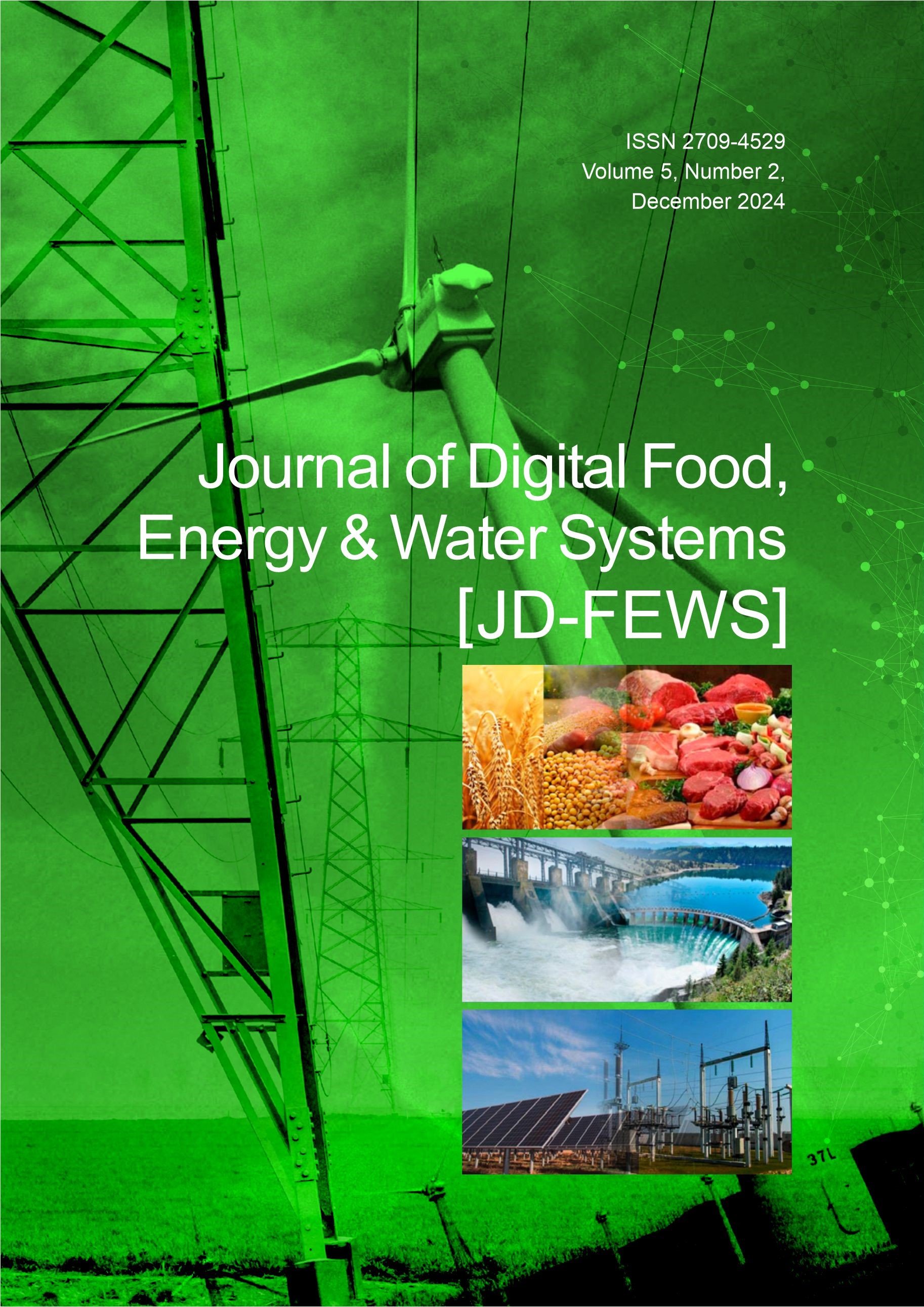Impact Of Magnetised Water on Nigeria Broiler Chicken Performance and Growth Rate
Main Article Content
Keywords
Magnetised water, Broiler chicken, mean body weight, growth rate
Abstract
Poultry farming is vital to Nigeria’s economy and provides a key protein source, yet many farms struggle with slow growth and high mortality in broiler chickens. This study aimed to assess the impact of magnetised water on broiler growth.
40 broiler chickens were housed in four groups (T0-T3) at the National Integrated Farm Project in Ilorin, Nigeria. The water treatment involved a setup with neodymium magnets and varied exposure times: T0 (control, no magnetisation), T1 (55 s), T2 (110 s), and T3 (165 s). Each group had 10 birds, and weekly weight was recorded over seven weeks. A paired t-test was used to analyze growth differences between treatments.
Average weekly weight gains for T0, T1, T2, and T3 increased progressively, with T3 showing the highest gain. Paired t-test results indicated significant differences in growth between magnetised and non-magnetised groups, with calculated values above the threshold (ttab = 2.969).
This study established that magnetised water increased the performance and growth rate of broiler chicken. It is therefore recommended that magnetised water can be used in producing broiler chicken for high income from poultry farming.
Article Metrics Graph
References
[2] Alhammer AH, Sadiq GT, and Yousif S. (2013). Effect of magnetized water on several biochemical and physical properties in mice. J Babylon Univ Pure Appl Sci, 21(3): 910-916.
[3] Alhassani, D., and Amin, G. (2012). Response of Some Productive Traits of Broiler Chickens to Magnetic Water. International Journal of Poultry Science,11(2): 158-160.
[4] Ali Y., Samaneh, R., and Kavakebian, F. (2014). Applications of Magnetic Water Technology in Farming and Agriculture Development: A Review of Recent Advances. Current World Environment, 9(3): 695-703
[5] Al-Mufarrej, S., Al-Batshan, H., Shalaby, M., and Shafey, T. (2005). The Effects of Magnetically Treated Water on the Performance and Immune System of Broiler Chickens. International Journal of Poultry Science,4(2), 96-102. doi:10.3923/ijps.2005.96.102
[6] Babu, C. (2010) Use of magnetic water and polymer in agriculture. Tropical research, ID08-806-001.agriculture.pdf https://www.gmxinternational.com/applications/agriculture/GMX-on
[7] Casey, K. D, Bicudo, J. R, Schmidt, D. R, Singh, A, Gay, S. W, Gates, R. S, Jacobson, L. D and Hoff, S. J. (2015) Air quality and emissions from livestock and poultry production/waste management systems. performance and rumen functionality of fattening beef cattle in winter
[8] Casey, K. D, Bicudo, J. R, Schmidt, D. R, Singh, A, Gay, S. W, Gates, R. S, Jacobson, L. D and Hoff, S. J. (2015) Air quality and emissions from livestock and poultry production/waste management systems. performance and rumen functionality of fattening beef cattle in winter
[9] Hussen MA. (2002). Magnetic water treatment is an attractive option. http://www.1st-in-wellness.com).
[10] Jassim, E Q., and Aqeel, Ch H. (2017). Effect of alkaline water and /or magnetic water on some physiological characteristics in broiler chicken. Journal of Entomology and Zoology Studies,5(5), 1643-1647. Retrieved April 4, 2018, from http://www.entomoljournal.com/archives/2017/vol5issue5/PartU/5-5-136-656.pdf
[11] Lam M. (2001). Uses of magnetized water in poultry production(www.DrLam.com).
[12] Mahdi AS (2012). The effect of using magnetically treated water on some productive and physiological traits of Turkish- Awassi rams. M. Sc. Thesis. Veterinary College, University of Baghdad, Iraq.
[13] Mohamed, A.I. and Ebead, B. M. (2013) Effect of irrigation with magnetically treated water on faba bean growth and composition. International Journal of Agricultural Policy and Research, 1 (2):24-40. https://journalissues.org/wp-content/uploads/2014/07/IJAPR-Ahmed-and-Ebead.pdf
[14] Radha, G. H and AL-Sardary, S. Y. T. (2021) Effects of using magnetic matter on egg quality and biochemical composition in commercial layers. IOP Conference Series: Earth and Environmental Science, 761: 1 – 9. doi:10.1088/17551315/761/1/012106
[15] Shah D, and Nagarajan N. (2013). Luteal insufficiency in first trimester. Indian J Endocrinol Metab,17: 44- 49.
[16] Shen, D., Duley, W. W., Peng, P., Xiao, M., Feng, J., Liu, L. and Zhou, Y. N. (2020). Moisture‐enabled electricity generation: from physics and materials to self‐powered applications. Advanced Materials, 32(52), 2003722.
[17] Smith, K. A., Jackson, D. R., Misselbrook, T. H., Pain, B. F. and Johnson, R. A. (2000) Reduction of ammonia emission by slurry application techniques, Journal of Agricultural Engineering Research, 77 (3): 277-287. https://doi.org/10.1006/jaer.2000.0604
[18] Sohal R, Mockett R, and Orr WC. (2002). Mechanisms of aging: an appraisal of the oxidative stress hypothesis. Free Radic Biol Med 33(5): 575-586.
[19] Yacout, H. (2015). Effect of Magnetic Water on the Performance of Lactating Goats. Journal of Dairy, Veterinary and Animal Research,2(5), 1-14. doi:10.15406/jdvar.2015.02.00048
[20] Yusuf, K. O. and Ogunlela, A. O (2015). Impact of magnetic treatment of water on growth and yield of tomato. Journal of Notulae Scientia Biologicae, 7 (3): 345-348.
[21] Yusuf, K.O, Akande, O.S and Baiyeri, R.M (2022) Effect of drinking magnetized water on offensive odour from poultry droppings of broiler chicken. Journal of Environmental Research, Engineering and Management; vol. 78/No 3/2022 pp. 119-128


